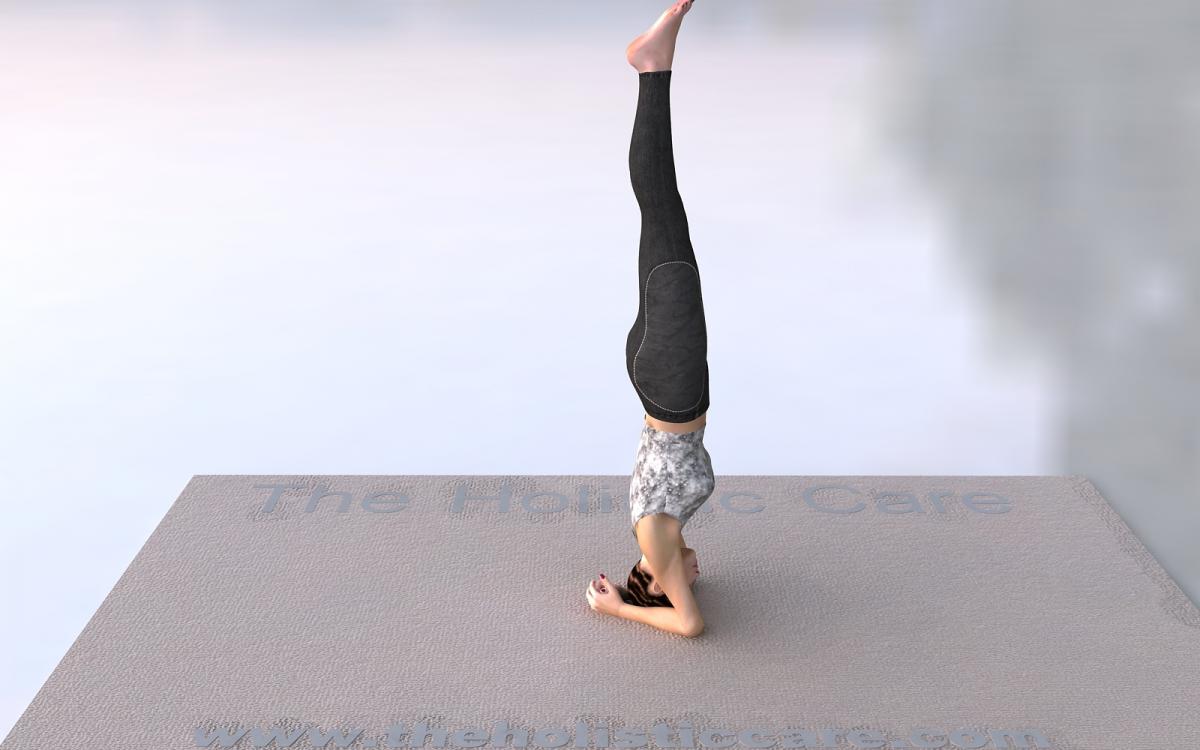In Sanskrit, the word “sirsha” means head. This posture is the well-known headstand posture. Sirsasana is an extremely powerful asana, with physical and mental benefits derived from its emphasis on balance and the body’s inverted position. It is often referred to as the “king of asanas” due to its overall impact on the entire body.

Position of Readiness
- Fold back both legs at the knees and be seated on the heels of the feet.
- Keep the body straight.
- Align the head, neck, and spine in one line.
- Look forward.
- Place the palms on their respective side knees.
- Breathe normally.
- Use extra padding, such as a folded blanket, for the headstand.
Steps
- Lean forward and interlock the fingers of your hands, placing them on the extra padding (yoga mat).
- Keep the elbows about shoulder-distance apart.
- Position the back of your head against the inside of the interlocked fingers.
- Rise up off your knees and take a step or two toward your head.
- Inhale and slowly raise the legs until they are vertical.
- Maintain a straight back and try to relax.
- Breathe slowly and deeply from the abdomen.
- Stay in this position for about fifteen seconds.
To Release the Pose:
- Bend your knees and lower one leg, then the other.
- Initially, start with a 15-second headstand and gradually increase the time by 15 seconds each week until you can hold it for three minutes.
Benefits
- Stimulates four important endocrine glands: the pituitary, pineal, thyroid, and parathyroid glands.
- Beneficial effects on the whole body, addressing nervousness, tension, fatigue, sleeplessness, dullness, fear, poor blood circulation, bad memory, asthma, headaches, constipation, congested throat, liver or spleen issues, female disorders, and initial stages of eye and nose troubles.
- Promotes hair growth by increasing circulation to the scalp.
- Enhances brain function (intelligence and memory) and boosts vitality and confidence.
- Maintains correct spinal alignment.
- Restores the position of vital organs by reversing gravity.
- Improves sleep quality.
Note
- Beginners should first master some basic postures like Sarvangasana, Dhanurasana, and Ustrasana before attempting Sirsasana.
- Beginners may start in a corner to practice without fear of falling.
- Avoid this posture if you have high or low blood pressure. Normalize blood pressure through good nutrition and other asanas.
- Women should not perform Sirsasana during menstruation (as with all inverted postures).
- Consult a physician if you have serious eye diseases, constipation, pus in your ears, chronic nasal catarrh, or issues with the pituitary, pineal, or thyroid gland, or if you have a neck injury.